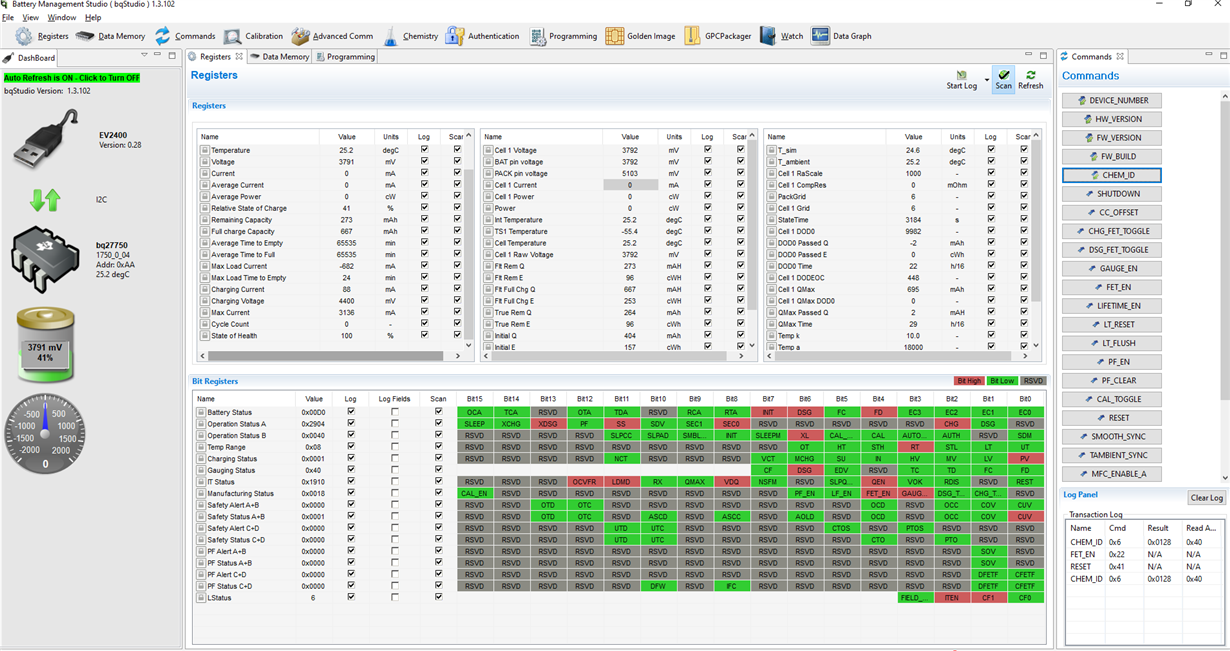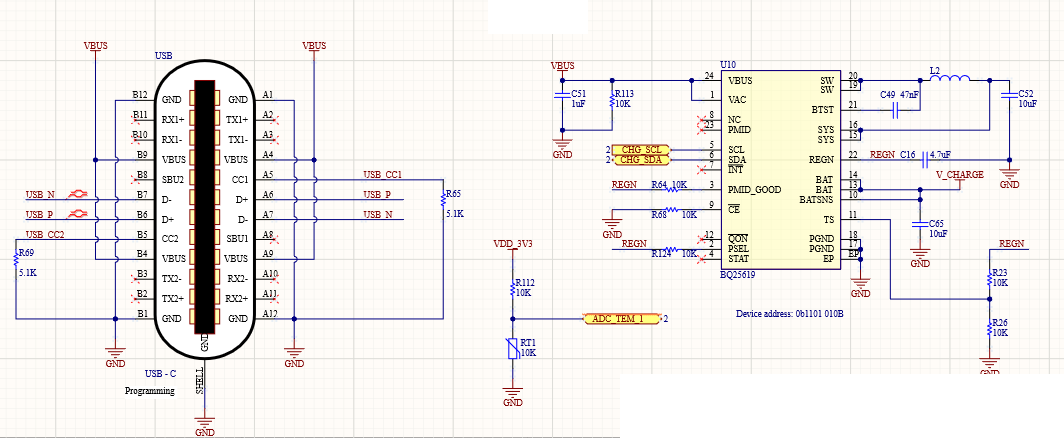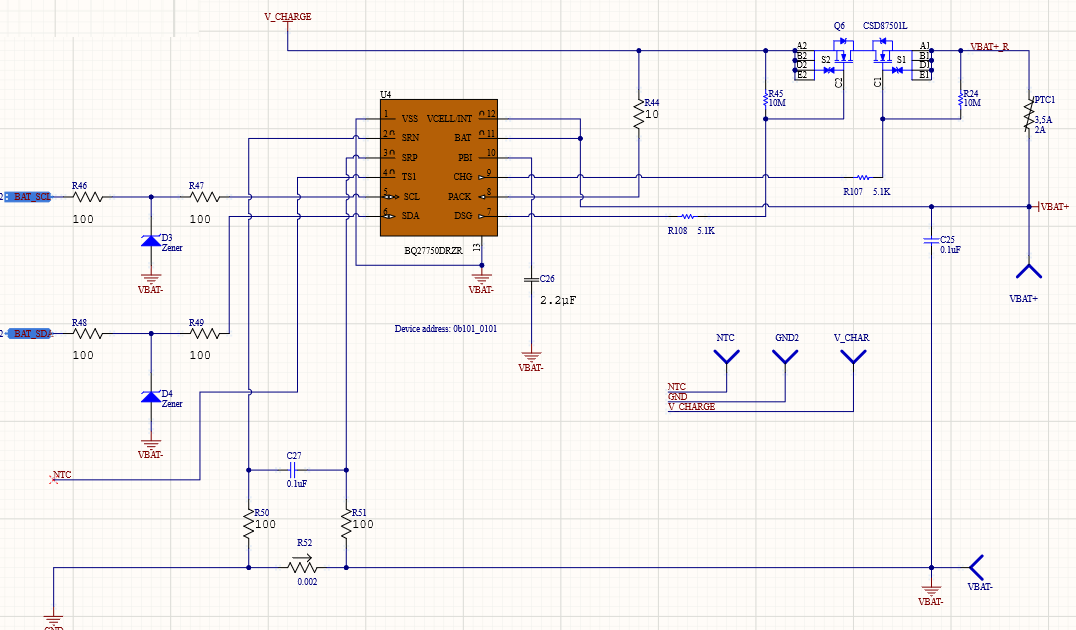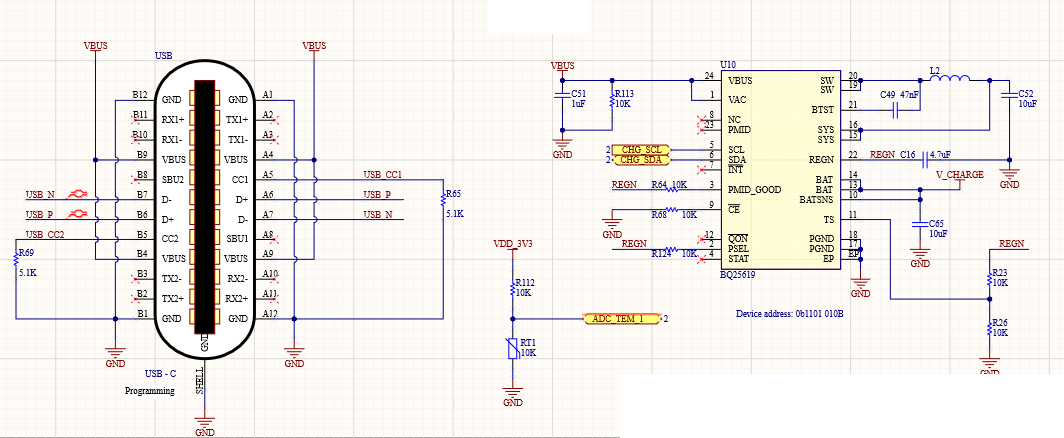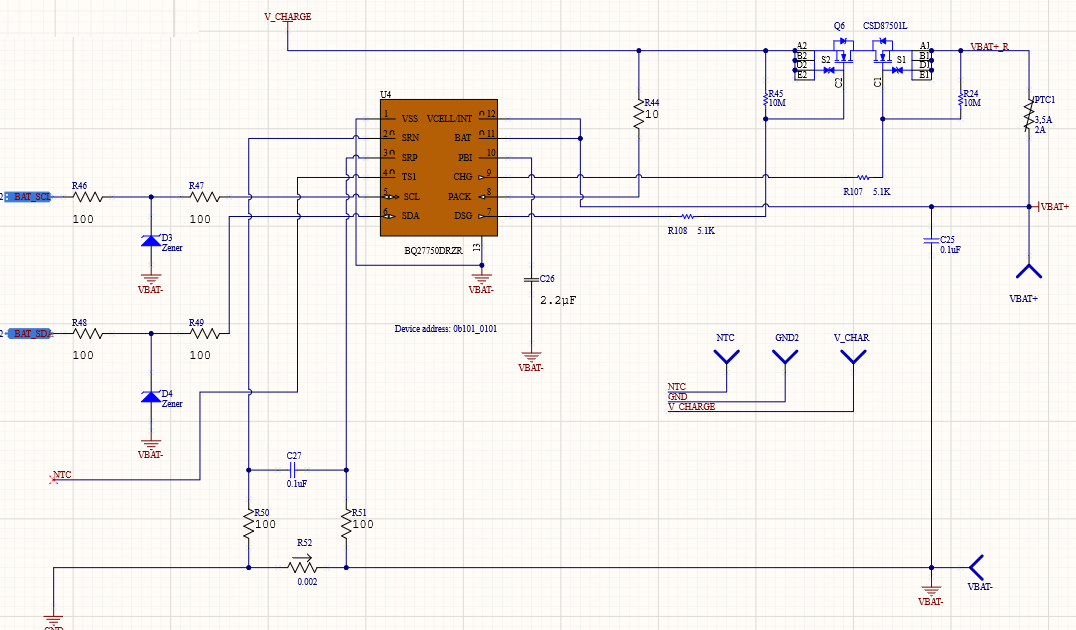Part Number: BQ27750
CUV parameters:
- Threshold: 3500mV
- Delay: 2s
- Recovery: 3600mV
In protection configuration, I enable CUV_RECOV_CHG to recovery CUV protection as charge is available.
I just enable CUV protection and disabled all other. After the BQ27750 meets the CUV protection condition, it turn off DSG FET to terminate discharge and CHG FET remains ON. Then I connect charger to recharge the sensor but it can't charge and the current is always zero.
I wonder why the bq27750 cannot charge while CHG FET is ON and does not have any protection condition to disable charging. If the device is charged, CUV protection condition will be recovery.
I tested with BQ27750EVM-837 module with BQStudio. I use BAT with CHEMID is 0x0128. The sensor has passed calibration and learning cycle.
Thank you.


